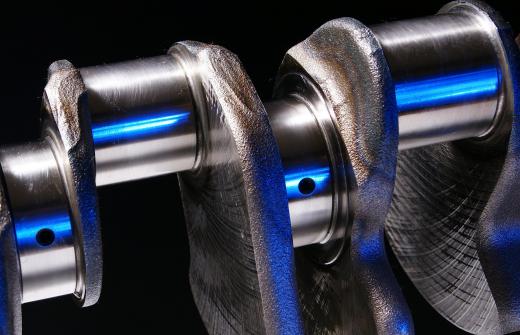A plain bearing is a simple mechanism consisting of two sliding components. This lightweight, compact, and inexpensive bearing is widely used in many types of equipment and is sometimes referred to as a Babbitt, bushing, or journal bearing. A plain bearing can be used for three basic types of motion: linear, thrust, and journal. The basic types of plain bearings are bushing, integral or two-piece. The bearings may be composed of many types of materials.
Plain bearings used for linear motion may consist of either a round bearing and shaft assembly or two corresponding surfaces that slide against each other. Thrust motion plain bearings allow rotation to take place between two parts while supporting an axial load. Journal motion bearings typically consist of a rotating shaft inside of a stationary bearing. A journal motion is the most common type of motion in which a plain bearing is utilized.

A bushing type bearing is a separate piece that is fitted inside of a housing to provide a replaceable bearing surface. Bushings are generally the most common type of plain bearing application. An integral bearing is actually built into the piece of equipment for which it is being used. Integral bearings typically consist of a machined hole bored directly into the piece of equipment with a steel shaft running through it. Two piece bearings are commonly utilized for large diameter applications such as crankshaft and connecting-rod assemblies.
A plain bearing must be constructed of a durable material that provides low friction and is resistant to both heat and corrosion. Plain bearings are typically composed of two separate components. One bearing component is usually made of a soft material while the other is much harder. In most applications, the soft bearing component is used to support the harder one. A wide variety of materials are used to make the components of plain bearings.
Bronze is typically used in bushing type bearings in combination with a polished and hardened steel shaft. The softer bronze bushing supports the shaft and can be easily replaced when it becomes worn. A graphite and copper alloy is typically utilized for plain bearing applications in ovens and dryers. The graphite material in the alloy acts as a dry lubricant for the bearing. Cast iron generally provides a long-lasting material in combination with steel shafts in thrust motion bearing applications.
Babbitt metal is frequently used as a bore coating for integral type bearings to collect lubricant contaminants and prevent damage to the journal. Solid plastic typically provides a durable bearing material that requires no lubricant. Plastic polymer materials are also resistant to corrosion and generally maintenance free. The hard ceramic material used in some plain bearings is usually able to grind sand and grit contaminants to a fine powder while providing continuously smooth operation.
